Another tough game in the match for the title of Women’s World Champion as challenger Lei Tingjie continues to pressure Ju Wenjun with opening surprises, while the defender counters in the endgame
Despite her excellent resourcefulness, things are becoming increasingly uncomfortable in the openings for the defending Women’s World Champion.
The fourth game of the match saw another Queen’s gambit played, but this time Lei (who was Black) opted for the Vienna variation which strikes a fine balance between sharpness and positional soundness. Lei sacrificed a pawn early on and got sufficient positional compensation. Once again, the challenger surprised the defending World Champion with her opening preparation: while Lei’s homework went deep into the middlegame, Ju was out of her book early on.
Despite being heavily down on time, Ju showed great resourcefulness, finding strong countering moves and holding the balance.
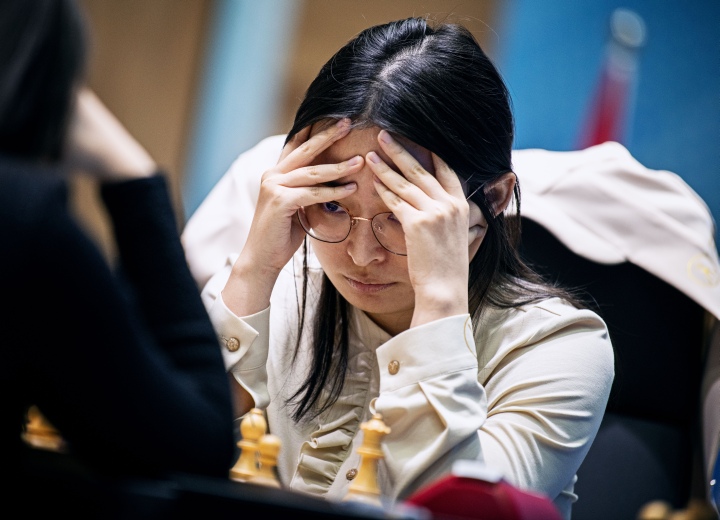
After the queens were exchanged in the final stages of the middlegame, the tension somewhat eased, but the position remained hard to play for both sides. With further exchanges following, the two players entered an even endgame with a pair of rooks and opposite-coloured bishops in which Black finally regained a pawn. It seemed that they were heading for a quick draw, but at this point – like in game three – we saw a twist.
By the endgame, Lei was the one slightly behind on time, with 30 minutes compared to Ju’s 36. Similar to game three, it was now Ju who began turning up the pressure by advancing her central pawns. Lei was desperately down on time by the end and had to play extremely precisely. Luckily for her, in the most critical moment in the endgame, Lei found the only move to hold a draw.
The game ended in threefold repetition, after 61 moves.
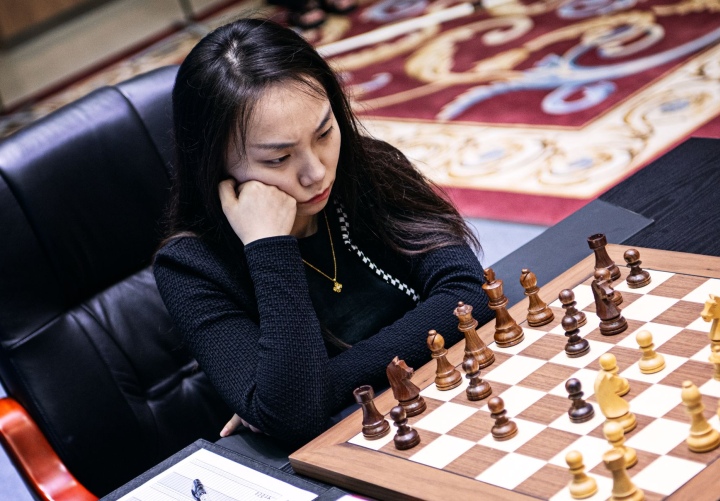
Grandmasters analysing the games noted that both players played very precisely throughout the match so far as neither side had clear winning chances. The result is now 2:2.
The players will have their second rest day in the match on Monday, 10th July. Game five will be played on Tuesday, 11th July, at 3 PM Local Time in Shanghai (GMT +8)
Here follows a closer look at game four of the match:

Ju Wenjun opened with 1.d4, sticking with her standard opening-move choice. After 1…d5 2.c4 e6 3.Nf3 Nf6 4.Nc3 dxc4 Lei was the first to deviate from the line played in game two, where she went for the Tarrasch Defense.
This time around, the opponents tested the Vienna variation of the Queen’s Gambit declined – one of the most underrated and interesting lines, as noted by GM Daniel Naroditsky. It’s a system that strikes a balance between having a sharp position and, at the same time, being relatively sound from a positional standpoint for Black. While the queenside pawn structure isn’t good for Black, as compensation, she has a strong outpost on d5.
The players followed the realms of theory here, playing their moves quickly.
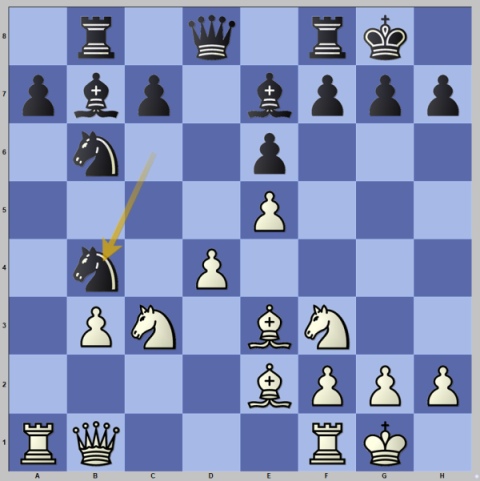
Black offered a pawn sacrifice – a well-known idea in this position. White has the option to take on a7, but Black would just continue with Nb6-d5, playing for the initiative. “Impressive that Lei has her preparation covered this far,” noted Woman Grandmaster Jovanka Houska.
It was the first move after which Ju spent more time thinking, suggesting that here she was out of preparation but played the most logical 15.Ne4, which is the first line of Stockfish. Two moves down the road, White accepted the pawn sacrifice.
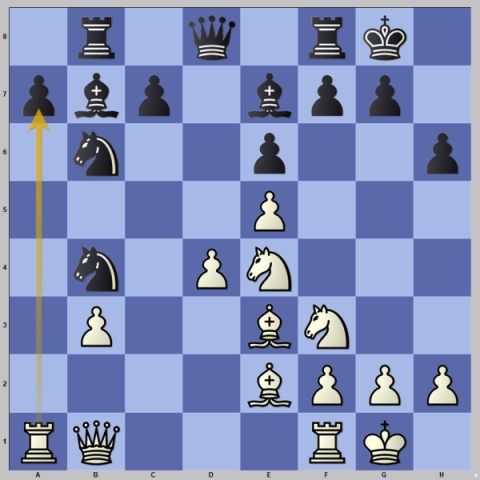
16.Rxa7 “A very critical move”, said grandmaster Alik Gershon who was commenting on the game together with GM Xu Yi. White is out of her book and needs to find every move keeping in mind that her opponent is in a position where she can shift between plans.
By move 20, Black reached complete equality by skillfully rotating her knights on b4 and d4 squares. By this point, Lei had an hour and 33 minutes – three minutes more than at the start of the match (due to a 30-second increment per move), while the defending world champion Ju Wenjun had under an hour.
In subsequent play, the opponents slowly manoeuvred in a very complicated position. On move 27, the queens were traded, but there was still plenty of tension in the game.
With her 29th move, Lei made a seemingly risky pawn push on the kingside 29…g5, but chess engines approved her choice.
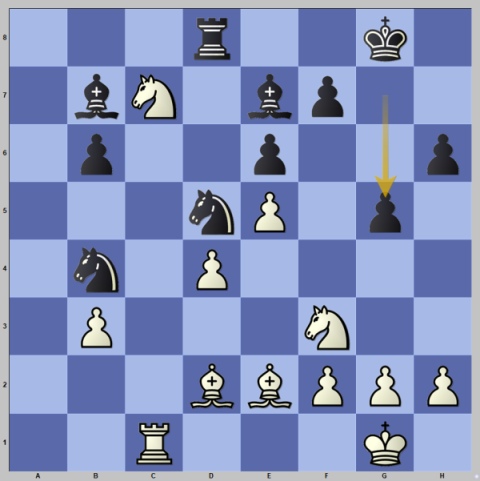
After 30.h3 Nf4 31.Bxf4 gxf4 32.Nb5 Bc6 33.Kf1 Kf8 34.Rd1, it seemed that neither side had any real improving moves left.
The exchanges continued, and both sides reached an even endgame with a pair of rooks and the opposite-coloured bishops.
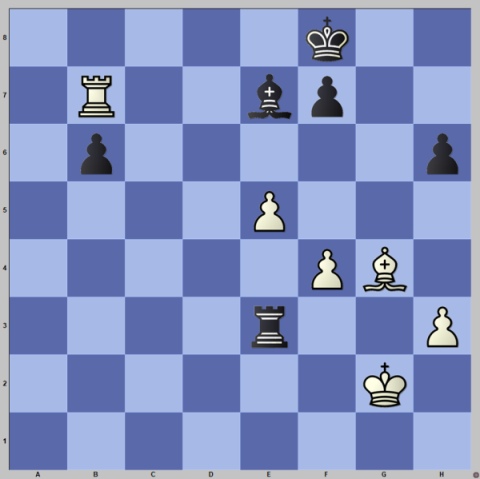
Since White was more active, Ju put Lei to the test by advancing her central pawns. To her credit, the challenger demonstrated necessary accuracy in defence with just two minutes on her clock. In the end, Lei had to find the only move to secure a draw.
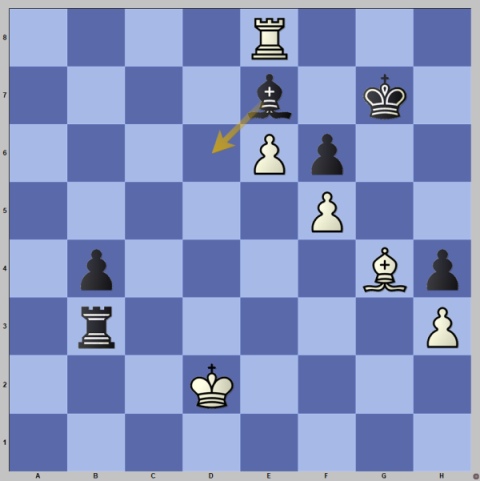
59…Bd6! The point is that 59…Bc5 fails to 60.e7 Re3 61.Rc8 winning the bishop.
After the precise move by Lei, White can’t make any progress. The game ended in a draw after threefold repetition.
A surprising twist at the end, but Lei held on. The score is now 2:2.
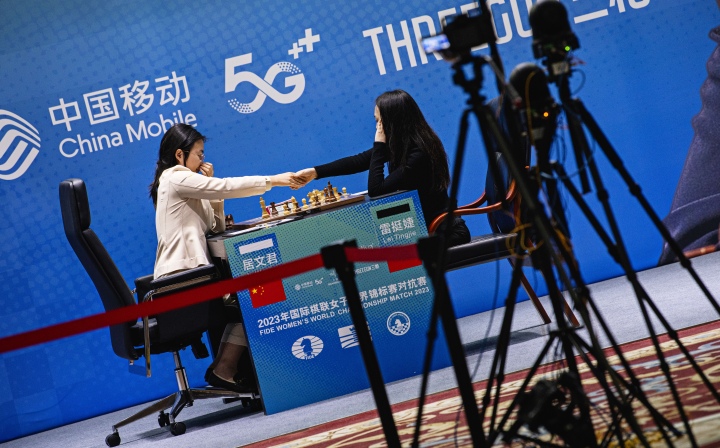
Text: Milan Dinic
Photos: Stev Bonhage and David Llada
Official website: womenworldchampionship.fide.com/
About the Match
The match will take place in two Chinese cities, where each of the contestants comes from. The first half of the match will be in Shanghai, while the second half takes place in Chongqing.
The match will consist of 12 games of classical chess. The payers will have 90 minutes for the first 40 moves, followed by 30 more minutes for the rest of the game, plus a 30-second increment per move starting on move one.
Players cannot offer a draw before they reach the 41st move.
In case of a tie, there will be the following tiebreaks:
Four games with a 25+10 time control.
Two games with a 5+3 time control.
Two more games with a 5+3 time control.
One game with a 3+2 time control, until a winner is determined.
The prize fund is €500,000, with €300,000 going to the winner and the remaining €200,000 to the runner-up.
If the outcome of the match is decided upon tiebreaks, the winner will take €275,000, while the runner-up will receive €225,000.








